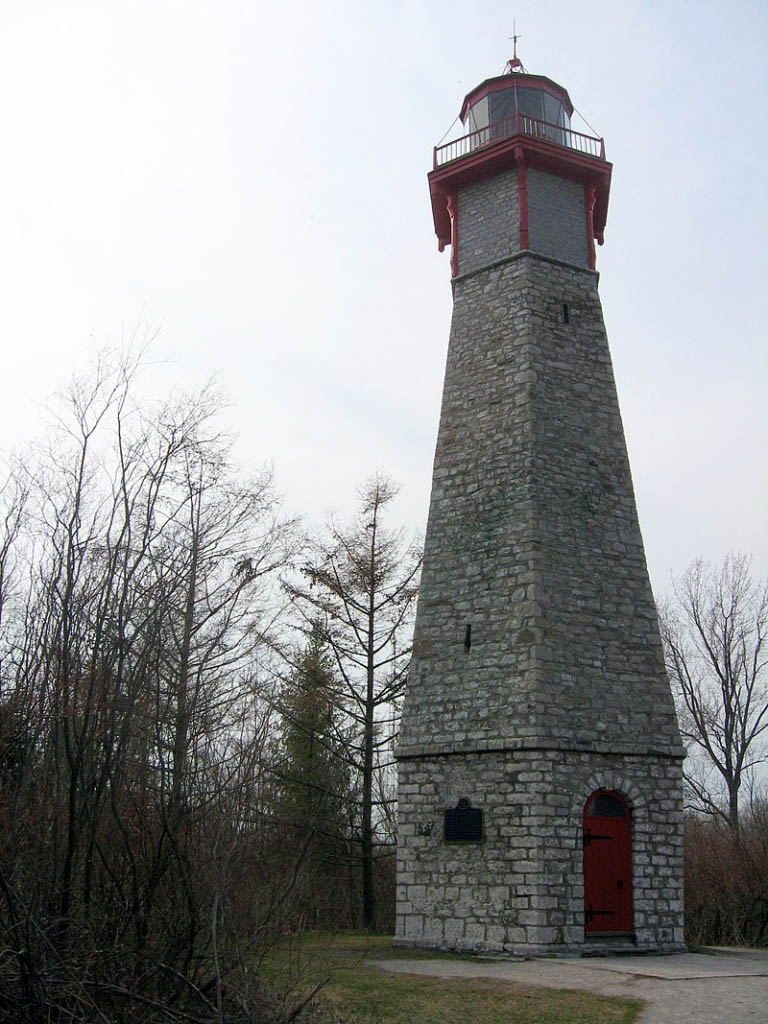
The Gibraltar Point Lighthouse is a lighthouse that can be found in Toronto, Ontario, Canada, on the Toronto Islands. It is one of Toronto’s oldest structures and the oldest Great Lakes lighthouse still in operation. Construction on it began in 1808. The lighthouse is perhaps best known for the 1815 murder of John Paul Radelmüller, its first keeper and a German immigrant whose death served as the inspiration for Toronto’s most famous ghost story. Many elements of the traditional account of his death have been supported by recent research, which has also helped to identify the soldiers who were accused of the crime but ultimately cleared.
The Gibraltar Point lighthouse was approved in 1803 along with two other lighthouses by an act of the Legislative Assembly of Upper Canada, but construction didn’t start until 1808. In 1832, it was raised to 82 feet (25 m) from its original 52-foot (16-meter) height. The diameter varies from approximately 2.1 metres (6.9 ft) at the top to approximately 7 meters (23 ft) at the base. Stone quarried in Queenston is used for the base, and Kingston stone is used for the extension. A harbour fee assessed to all boats entering the harbour was used to fund the construction and maintenance of the lighthouse. The lighthouse was built in August 1809 and stood 25 feet (7.6 m) away from the water. Sand has since accumulated and built up over time so that it now stands about 100 metres (110 yd) inland.
The lighthouse keeper’s cottage was present when the lighthouse was opened. It was a square-log home with clapboard siding. It had two stories, with sleeping quarters in the attic and two rooms on the first floor. The lighthouse keeper would raise a flag to alert the harbour master of Toronto when ships came close. The cottage is no longer standing.
At first, the tower light was a cage made of glass and oak that was lit by candles. In 1832, the tower switched to sperm oil, and in 1863, it switched to coal. The wood lamp structure from the beginning was changed to steel in 1878. In 1916–17, an electric light was installed, and it was upgraded in 1945. Metro Parks took over management in 1958 and made renovations in 1961–1962. The lighthouse is currently abandoned, but it is occasionally accessible to the public for tours.
To provide navigational assistance along Toronto’s waterfront and Toronto Harbour since the lighthouse was decommissioned, smaller automated lighthouses (two of which are located at Humber Bay Park in the west and Bluffer’s Park in the east), the Toronto Harbour Light, as well as floating bell or light buoys, navigational masts, have been used.
The Local Legend, John Paul Radelmüller
According to local lore, the lighthouse is haunted by John Paul Radelmüller, who was killed there in 1815. Soldiers from Fort York, so the legend goes, went in search of J.P. Radelmüller’s illicit beer on the evening of January 2, 1815. But because they had consumed too much alcohol, a fight broke out, which led to the keeper’s murder. According to the story, the drunken soldiers attempted to cover up their crime by dismembering the victim and burying the pieces. During his search for the body in 1893, then-keeper George Durnan discovered coffin fragments and a piece of a jawbone close to the lighthouse, though it was impossible to prove with certainty that they belonged to Radelmüller. The murder legend’s veracity has long been called into question. If the keeper’s death story is true, as noted Toronto historian Mike Filey put it, “Your guess is as good as mine.”
More information about the life and death of Radelmüller has recently come to light. Radelmüller, who was born in Anspach, Germany, around 1763, served as a royal servant for twenty years in the homes of the Dukes of Gloucester and Kent, travelling to Halifax, Nova Scotia, with the latter in 1799. Radelmüller, who arrived in York in 1804, was chosen on July 24, 1809, to serve as the lighthouse keeper at Gibraltar Point.
According to the most recent and conclusive investigation into Radelmüller’s murder, who was about fifty-two years old at the time, he did indeed die violently on January 2, 1815, confirming the basic veracity of many elements of the well-known myth. Eamonn O’Keeffe also named John Henry and John Blueman, two Irishmen who served in the Glengarry Light Infantry, a regiment that saw a lot of action in the War of 1812, as the two soldiers accused of (but cleared of) killing Radelmüller.
Many aspects of the folktale have been confirmed by research, but O’Keeffe questioned some of the more dramatic parts. Contrary to assertions that the keeper’s body was dismembered and concealed, current research suggests that Radelmüller’s body was not dismembered and was instead discovered after his passing by the 4th lighthouse keeper George Durnan and his uncle Joe when he was a young man and his father was the keeper. He told John Robertson that he and his uncle had found bone fragments 500 feet west of the lighthouse, including, most notably, a jawbone and pieces of a coffin, which they believed belonged to the late Radelmüller.






